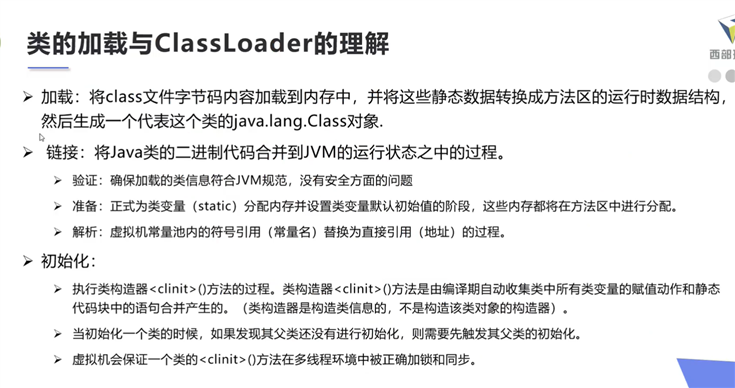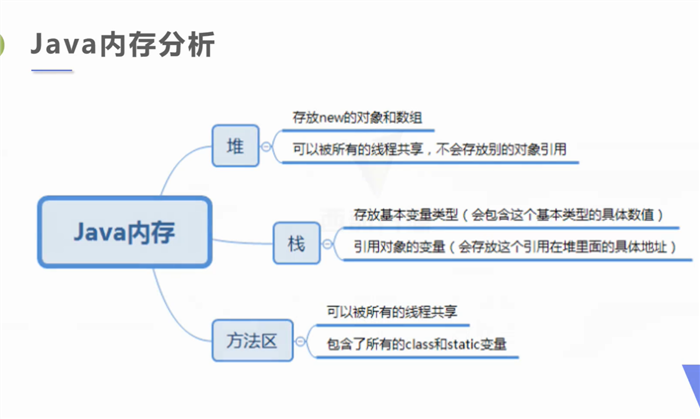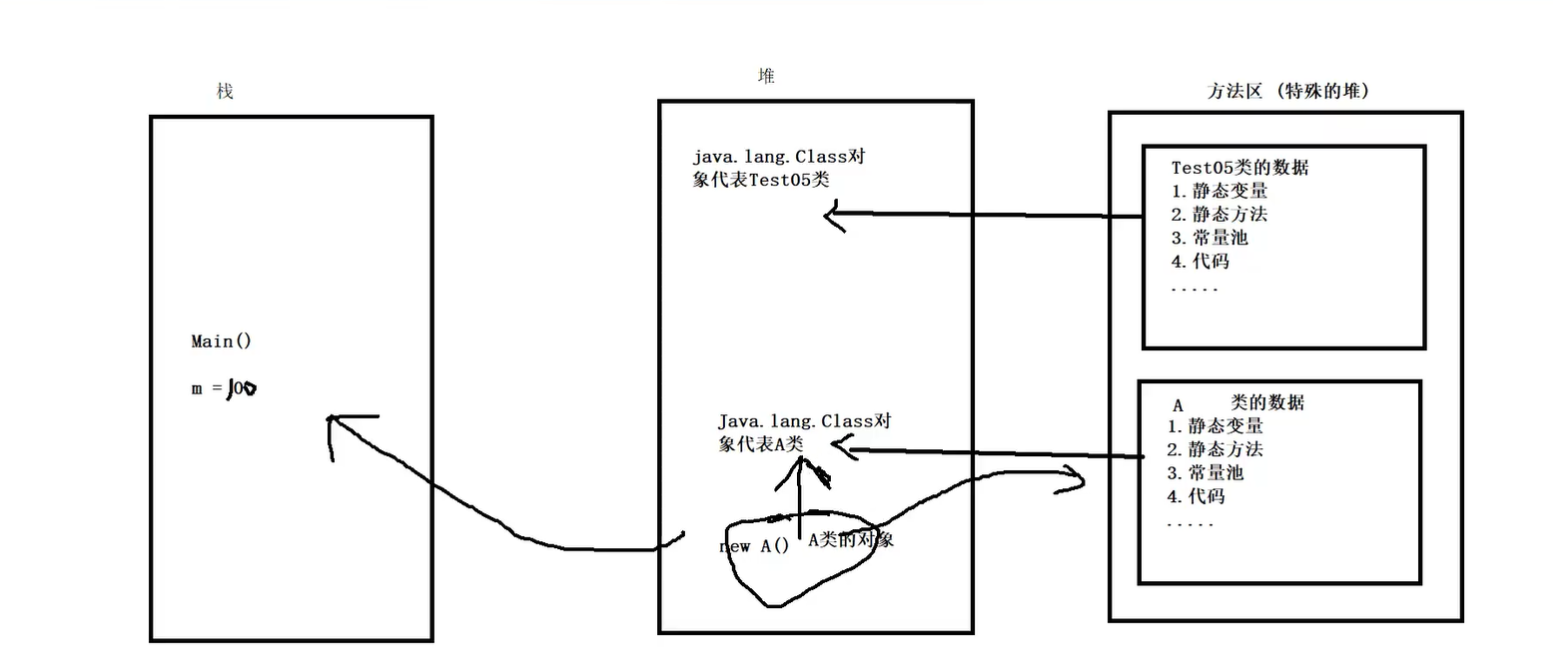package com.xiaobai.annotation;
public class lesson01 {
@Override//这个就是注解,说明重写
public String toString() {
return super.toString();
}
}
package com.xiaobai.annotation;
import java.lang.annotation.*;
public class Test02 {
}
@Target(ElementType.TYPE)
@Retention(RetentionPolicy.RUNTIME)
@Deprecated
@Inherited
@interface Myannotation{
}
package com.xiaobai.annotation;
import java.lang.annotation.ElementType;
import java.lang.annotation.Retention;
import java.lang.annotation.RetentionPolicy;
import java.lang.annotation.Target;
public class Test03 {
@Myannotation2(name = "注解")
public void test(){}
@Myannotation3("注解2")
public void test2(){}
}
@Target({ElementType.TYPE,ElementType.METHOD})
@Retention(RetentionPolicy.RUNTIME)
@interface Myannotation2{
//注解参数:参数类型+参数名+()
String name();
int age() default 0;//默认为0传参数
int id() default -1;//如果默认为-1,表示不存在
String[] schools() default {"冬季","夏季"};
}
@Target({ElementType.TYPE,ElementType.METHOD})
@Retention(RetentionPolicy.RUNTIME)
@interface Myannotation3{
String value();//单个注解,可以用value表示,使用该注解时,可以不传参数名字
}
package com.xiaobai.reflection;
public class Test01 {
public static void main(String[] args) throws ClassNotFoundException {
Class<?> aClass = Class.forName("com.xiaobai.reflection.Test01");
System.out.println(aClass.getClass());
Class<?> c1 = Class.forName("com.xiaobai.reflection.Test01");
Class<?> c2 = Class.forName("com.xiaobai.reflection.Test01");
Class<?> c3 = Class.forName("com.xiaobai.reflection.Test01");
System.out.println(c1.hashCode());
System.out.println(c2.hashCode());
System.out.println(c3.hashCode());
}
}
class User{
private String name;
private int id;
private int age;
public User() {
}
public User(String name, int id, int age) {
this.name = name;
this.id = id;
this.age = age;
}
@Override
public String toString() {
return "User{" +
"name=‘" + name + ‘\‘‘ +
", id=" + id +
", age=" + age +
‘}‘;
}
}
package com.xiaobai.reflection;
public class Test02 {
public static void main(String[] args) throws ClassNotFoundException {
Student student = new Student();
//通过对象获取
Class c1 = student.getClass();
//通过forname获取类对象
Class c2 = Class.forName("com.xiaobai.reflection.Student");
//通过类名
Class c3 = Student.class;
System.out.println(c1.hashCode());
System.out.println(c2.hashCode());
System.out.println(c3.hashCode());
//基本类型内置类获取
Class c4 = Integer.TYPE;
System.out.println(c4);
//获取父类
Class c5 = c1.getSuperclass();
System.out.println(c5);
}
}
class Person{
public String name;
public int id;
public int age;
public Person() {
}
public Person(String name, int id, int age) {
this.name = name;
this.id = id;
this.age = age;
}
@Override
public String toString() {
return "Person{" +
"name=‘" + name + ‘\‘‘ +
", id=" + id +
", age=" + age +
‘}‘;
}
}
class Student extends Person{
public Student(){
this.name = "学生";
}
}
package com.xiaobai.reflection;
import java.lang.annotation.ElementType;
public class Test03 {
public static void main(String[] args) {
Class c1 = Object.class;
Class c2 = Comparable.class;
Class c3 = String[].class;
Class c4 = int[][].class;
Class c5 = Override.class;
Class c6 = ElementType.class;
Class c7 = Integer.class;
Class c8 = void.class;
Class c9 = Class.class;
System.out.println(c1);
System.out.println(c2);
System.out.println(c3);
System.out.println(c4);
System.out.println(c5);
System.out.println(c6);
System.out.println(c7);
System.out.println(c8);
System.out.println(c9);
int[] a =new int[10];
int[] b = new int[100];
System.out.println(a.getClass().hashCode());
System.out.println(b.getClass().hashCode());
}
}
详细讲解见狂神说JAVA视频



package com.xiaobai.reflection;
public class Test04 {
static {
System.out.println("main被加载");
}
public static void main(String[] args) throws ClassNotFoundException {
//1.主动引用
//Son son = new Son();
//2.反射
//Class.forName("com.xiaobai.reflection.Son");
//3.调用静态方法
//System.out.println(Son.m);
//不会初始化
//1.通过子类引用父类静态变量,子类不会加载
//System.out.println(Son.b);
//2.引用常量
//System.out.println(Son.M);
//3.通过数组定义类引用
Son[] arry = new Son[5];
}
}
class Father{
static int b = 2;
static {
System.out.println("父类被初始化");
}
}
class Son extends Father{
static {
System.out.println("子类被加载");
m = 300;
}
static int m = 100;
static final int M = 1;
}
package com.xiaobai.reflection;
public class Test05 {
public static void main(String[] args) throws ClassNotFoundException {
//获取系统类的加载器
ClassLoader systemClassLoader = ClassLoader.getSystemClassLoader();
System.out.println(systemClassLoader);
//获取系统类加载器的父类--扩展加载器
ClassLoader parent = systemClassLoader.getParent();
System.out.println(parent);
//获取扩展类加载器的父类加载器--根加载器
ClassLoader parent1 = parent.getParent();
System.out.println(parent1);
//测试当前类的加载器是哪个
ClassLoader classLoader = Class.forName("com.xiaobai.reflection.Test05").getClassLoader();
System.out.println(classLoader);
//测试JDK内置类是哪个加载器加载的
ClassLoader classLoader1 = Class.forName("java.lang.Object").getClassLoader();
System.out.println(classLoader1);
//获取系统类加载器可以加载的路径
System.out.println(System.getProperty("java.class.path"));
}
}
package com.xiaobai.reflection;
import java.lang.reflect.Constructor;
import java.lang.reflect.Field;
import java.lang.reflect.Method;
public class Test06 {
public static void main(String[] args) throws NoSuchFieldException, NoSuchMethodException {
User user = new User();
Class c1 = user.getClass();
//1.获取类的名字
String simpleName = c1.getSimpleName();//获取类名
System.out.println(simpleName);
String name = c1.getName();//获取包名+类名
System.out.println(name);
//2.获取类的属性
Field[] fields = c1.getFields();//获取类的pbulic的属性
for (Field field : fields) {
System.out.println("获取公开属性:"+field);
}
Field[] declaredFields = c1.getDeclaredFields();//获取类的全部属性
for (Field declaredField : declaredFields) {
System.out.println("获取全部属性:"+declaredField);
}
//获取指定属性
Field sex = c1.getField("sex");
System.out.println("获取指定公共属性"+sex);
Field id = c1.getDeclaredField("id");
System.out.println("获取指定全部属性"+id);
//3.获取类的方法
Method[] methods = c1.getMethods();//获取本类及父类全部的public的方法
for (Method method : methods) {
System.out.println(method);
}
Method[] declaredMethods = c1.getDeclaredMethods();//获取本类全部方法
for (Method declaredMethod : declaredMethods) {
System.out.println(declaredMethod);
}
Method setName = c1.getMethod("setName", String.class);//获取指定本类及父类全部方法
System.out.println(setName);
Method test001 = c1.getDeclaredMethod("test001",null);//获取指定本类的方法
System.out.println(test001);
//获得指定构造器
Constructor[] constructors = c1.getConstructors();//获取公开构造器
for (Constructor constructor : constructors) {
System.out.println(constructor);
}
Constructor[] declaredConstructors = c1.getDeclaredConstructors();//获取全部构造器
for (Constructor declaredConstructor : declaredConstructors) {
System.out.println(declaredConstructor);
}
Constructor declaredConstructor = c1.getDeclaredConstructor(String.class, int.class, int.class,int.class);//获取指定构造器
System.out.println(declaredConstructor);
}
}
package com.xiaobai.reflection;
import java.lang.reflect.Constructor;
import java.lang.reflect.Field;
import java.lang.reflect.InvocationTargetException;
import java.lang.reflect.Method;
public class Test07 {
public static void main(String[] args) throws ClassNotFoundException, InstantiationException, IllegalAccessException, NoSuchMethodException, InvocationTargetException, NoSuchFieldException {
//获得Class对象
Class c1 = Class.forName("com.xiaobai.reflection.User");
//构造一个对象
User user = (User) c1.newInstance();//调用了无参构造器
System.out.println(user);
//通过有参构造器构造
Constructor constructor = c1.getDeclaredConstructor(String.class, int.class, int.class, int.class);
User user2 = (User) constructor.newInstance("哈哈", 2, 3, 4);
System.out.println(user2);
//通过反射调用方法
Method setName = c1.getDeclaredMethod("setName", String.class);
User user3 = (User) c1.newInstance();
//invoke:激活
//(对象,“方法的值”)
setName.invoke(user3,"憨憨");
System.out.println(user3);
//通过反射操作属性
User user4 = (User) c1.newInstance();
Field name = c1.getDeclaredField("name");
//私有属性修改会报错,使用setAccessible方法关闭安全检测
name.setAccessible(true);
name.set(user4,"喵喵");
System.out.println(user4);
}
}
package com.xiaobai.reflection;
import java.lang.reflect.InvocationTargetException;
import java.lang.reflect.Method;
public class Test08 {
//普通方式调用
public static void test01(){
User user = new User();
long startTime = System.currentTimeMillis();
for (int i = 0; i < 1000000000; i++) {
user.getName();
}
long endTime = System.currentTimeMillis();
System.out.println("普通方式执行10亿次:"+(endTime-startTime)+"ms");
}
//通过反射方式调用
public static void test02() throws NoSuchMethodException, InvocationTargetException, IllegalAccessException {
User user = new User();
Class c1 = user.getClass();
Method getName = c1.getDeclaredMethod("getName", null);
long startTime = System.currentTimeMillis();
for (int i = 0; i < 1000000000; i++) {
getName.invoke(user,null);
}
long endTime = System.currentTimeMillis();
System.out.println("反射方式执行10亿次:"+(endTime-startTime)+"ms");
}
//通过反射方式调取,关闭安全检测
public static void test03() throws NoSuchMethodException, InvocationTargetException, IllegalAccessException {
User user = new User();
Class c1 = user.getClass();
Method getName = c1.getDeclaredMethod("getName", null);
getName.setAccessible(true);
long startTime = System.currentTimeMillis();
for (int i = 0; i < 1000000000; i++) {
getName.invoke(user,null);
}
long endTime = System.currentTimeMillis();
System.out.println("关闭安全检测的反射方式执行10亿次:"+(endTime-startTime)+"ms");
}
public static void main(String[] args) throws InvocationTargetException, NoSuchMethodException, IllegalAccessException {
test01();
test02();
test03();
}
}
详见狂神说JAVA
package com.xiaobai.reflection;
import java.lang.annotation.*;
public class Test09 {
public static void main(String[] args) throws ClassNotFoundException, NoSuchFieldException {
Class c1 = Class.forName("com.xiaobai.reflection.Student2");
//获得反射注解
Annotation[] annotations = c1.getAnnotations();
for (Annotation annotation : annotations) {
System.out.println(annotation);
}
//获得指定主角的值
Table annotation = (Table)c1.getAnnotation(Table.class);
String value = annotation.value();
System.out.println(value);
java.lang.reflect.Field name = c1.getDeclaredField("name");
Field annotation1 = name.getAnnotation(Field.class);
System.out.println(annotation1);
System.out.println(annotation1.columnName());
System.out.println(annotation1.type());
System.out.println(annotation1.length());
}
}
@Table("db.student")
class Student2{
@Field(columnName = "ID",type = "int",length = 10)
private int id;
@Field(columnName = "AGE",type = "int",length = 10)
private int age;
@Field(columnName = "NAME",type = "varchar",length = 3)
private String name;
public Student2() {
}
public Student2(int id, int age, String name) {
this.id = id;
this.age = age;
this.name = name;
}
public int getId() {
return id;
}
public void setId(int id) {
this.id = id;
}
public int getAge() {
return age;
}
public void setAge(int age) {
this.age = age;
}
public String getName() {
return name;
}
public void setName(String name) {
this.name = name;
}
@Override
public String toString() {
return "Student2{" +
"id=" + id +
", age=" + age +
", name=‘" + name + ‘\‘‘ +
‘}‘;
}
}
@Target(ElementType.TYPE)
@Retention(RetentionPolicy.RUNTIME)
@interface Table{
String value();
}
@Target(ElementType.FIELD)
@Retention(RetentionPolicy.RUNTIME)
@interface Field{
String columnName();
String type();
int length();
}
原文:https://www.cnblogs.com/novice77/p/14730236.html